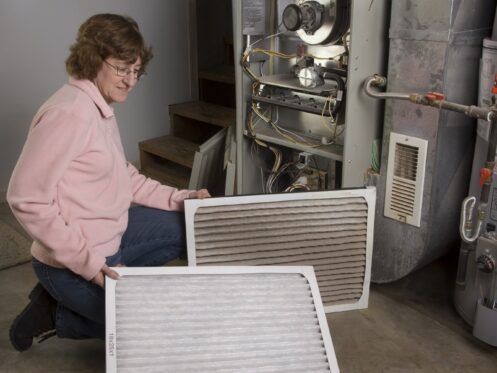Winter in Northern California may not bring blizzards, but those unexpected cold snaps can still catch you off guard. When the temperature falls, your heating system becomes the backbone of your home, working overtime to keep things warm and working. But is it ready to handle the chill?
We believe that prevention is the best strategy. With a little preparation and some simple steps, you can ensure your heating system stays in top shape, keeping your home comfortable all season long.
Let’s explore how you can safeguard your heater and avoid any unwelcome surprises when the cold strikes.
1. Give Your Heating System Some Love with Regular Maintenance
Think of your heating system as the unsung hero of your home—it works hard to keep you warm! Show it some appreciation by scheduling regular tune-ups. During a furnace maintenance visit, we inspect and clean critical components, check for worn parts, and ensure your system operates at peak efficiency. We service all kinds of other systems too, including heat pumps.
Safety controls are also tested to prevent unexpected shutdowns. Regular maintenance acts like a health check-up, catching small problems before they snowball into major repairs. If it’s been a while since your last tune-up, now is the perfect time to book one!
2. Keep Those Air Filters Clean
Dirty filters can force your heating system to work overtime, reducing efficiency and potentially causing long-term damage. During the winter months, clean filters are crucial because your heating system works harder to keep your home warm. Check your filters monthly to ensure proper airflow — which is especially important during a cold snap. Replace them every one to three months, depending on usage and filter type!
3. Seal Up Those Drafts
Have you noticed chilly breezes sneaking in through your windows or doors? Drafts might seem minor, but they force your heating system to work overtime to maintain a comfortable temperature.
To keep your home warm and efficient, seal gaps and cracks around windows and doors using weatherstripping or caulk. Adding insulation to your attic, walls, and ductwork is another effective way to trap heat where it belongs. These simple fixes can make your home more comfortable and reduce strain on your heating system.
4. Don’t Forget About the Outdoor Unit
If your heating system has an outdoor component, like a heat pump, protecting it from the elements is critical during cold snaps. Snow, ice, and debris can restrict airflow and reduce efficiency.
Keep the area around the unit clear, and check for any ice buildup. If ice becomes a persistent issue, it may indicate a deeper problem, such as restricted airflow or low refrigerant levels. You can also use a specially designed-cover to shield the unit. These steps help ensure your system operates smoothly, even during extreme weather.
5. Upgrade to a Smart Thermostat
A smart or programmable thermostat can revolutionize how you manage your home’s heating. These devices allow you to set a schedule that aligns with your daily routine, lowering the temperature when you’re asleep or away and warming the house just before you return.
Imagine being able to control your heating system from your phone—it’s not just convenient, it’s also energy-efficient. By reducing unnecessary heating, you save money and reduce wear and tear on your system. Upgrading to a smart thermostat is an easy way to make your home smarter and cozier.
6. Don’t Overwork Your System
We know—it’s tempting to crank up the thermostat when it’s freezing outside. But setting your thermostat too high can strain your heating system, increasing the likelihood of a breakdown. Instead, aim for a comfortable setting between 68-72°F and layer up with cozy blankets and sweaters to stay warm.
To help your system out, consider using space heaters in the rooms you use most or letting sunlight naturally heat your home by opening curtains during the day. These simple adjustments can keep your home warm while giving your heating system a much-needed break.
7. Watch for Warning Signs
Your heating system has ways of letting you know it needs attention. Uneven heating, strange noises, sudden spikes in energy bills, and weak airflow are all signs that something might be wrong. If you notice these issues, don’t ignore them.
Addressing problems early can save you from costly repairs and prevent your system from failing during a cold snap. If you’re unsure whether your system is running as it should, give us a call, and we’ll help you figure it out.
8. Take Care of Your Water Heater, Too
Your water heater works overtime in the winter, providing hot showers and warm water for your household. Draining and flushing the tank annually can remove sediment buildup that reduces efficiency.
For added protection, insulate the tank and pipes to prevent heat loss, and keep the temperature set to 120°F. These steps ensure your water heater is ready to meet your needs, even during the coldest days.
Stay Warm with Us This Winter
Winter in Northern California doesn’t have to be stressful. With a little preparation and support from Greiner Heating and Air, you can keep your system running smoothly with all our heating services, even during the coldest snaps. From maintenance and repairs to expert advice, we’re here to help you stay warm and comfortable all season long.
Have questions or need to schedule a service? Give us a call today—we’re here to help!
